
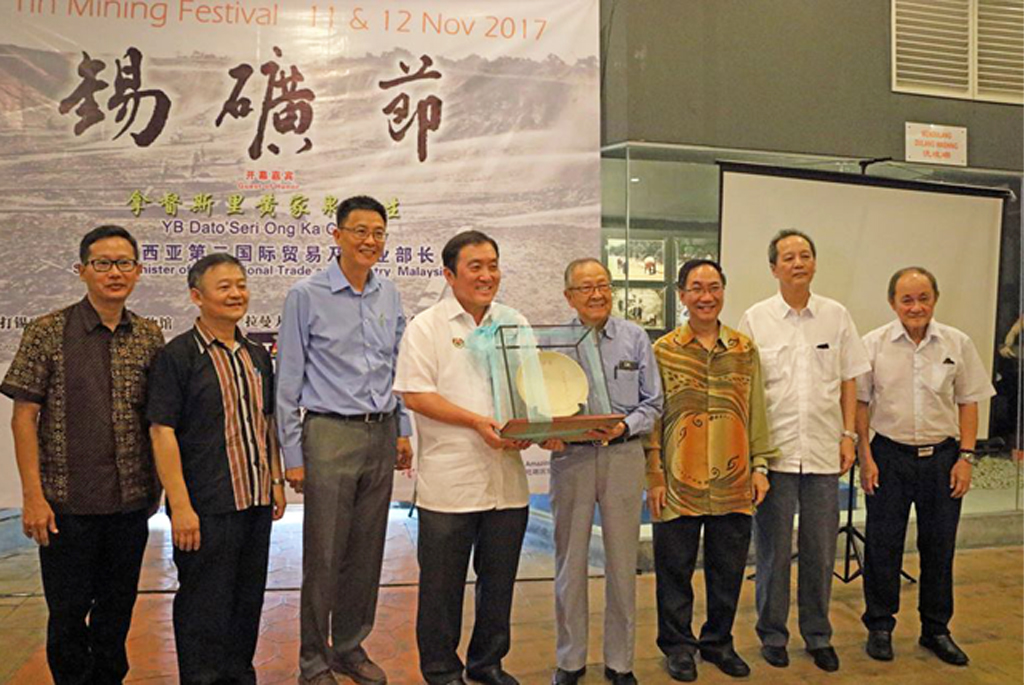
Tan Sri Hew (fourth from right) presenting a memento to Dato’ Seri Ong (fourth from left) while (from most left) Chew, Dr Wong, Hew, (from most right) Choong, Dato’ Chin and Prof Chuah look on
Jointly organised by UTAR, the Kinta Tin Mining (Gravel Pump) Museum and the Perak Chinese Mining Association, the Tin Mining Festival 2017 returned bigger at the Kinta Tin Mining (Gravel Pump) Museum from 11 to 12 November 2017.
Held for the third time since its inaugural launch in 2015, the annual festival’s perpetual aims include enhancing younger generation’s knowledge of Malaysia’s forgotten tin mining history, especially the history of the tin mining industry’s development in Kinta Valley; commemorating the contributions of the forerunners of the tin mining industry; and understanding the role of the tin mining industry in the country’s modernisation process.
Invited to launch the festival on 11 November was Second Minister of International Trade and Industry Dato’ Seri Ong Ka Chuan. Also present at the event were UTAR President Ir Prof Academician Dato’ Dr Chuah Hean Teik, Founder of the Kinta Tin Mining (Gravel Pump) Museum-cum-Perak Chinese Mining Association Advisor Tan Sri Dato’ Hew See Tong, Perak Chinese Mining Association Advisor Choong Tien Chuan, President of Perak Chinese Mining Association Dato’ Chin Lean Choong, Director of the Kinta Tin Mining (Gravel Pump) Museum Hew Fen Yee, UTAR Vice President for Student Development and Alumni Relations Prof Dr Choong Chee Keong, Chairperson of UTAR Centre for Chinese Studies Assoc Prof Dr Wong Wun Bin and Deputy Director of the Kinta Tin Mining (Gravel Pump) Museum Jacky Chew.
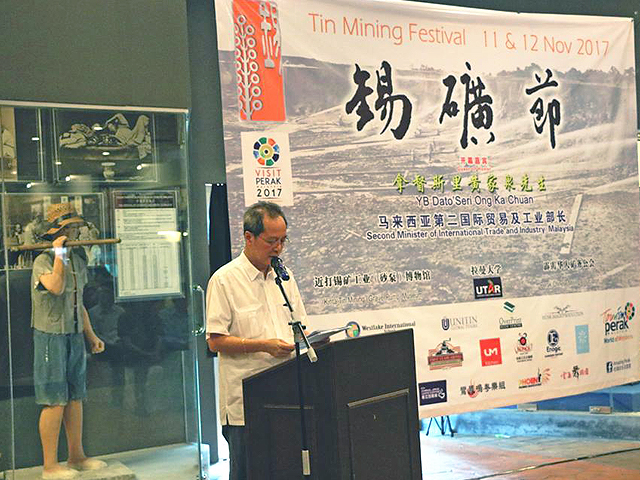
Dato’ Chin announcing the donation to the upcoming UTAR hospital in Kampar
Briefly introducing the history of the Kinta Valley’s “tin rush”, Dato’ Chin also shed light on the struggles faced by the pioneering miners and their sheer tenacity in developing the industry which eventually catapulted the country to be the largest tin producer for over a century (1880 – 1987). In an effort to carry on the legacy of the pioneering miners, Dato’ Chin said the members of the Perak Chinese Mining Association reached a consensus that the best way was to commemorate their tremendous achievements.
“We decided to sell off one of the buildings in Jalan Raja Permaisuri Bainun, Ipoh and set up a foundation to be used in the repair and renovation of the association’s two original buildings in Jalan Tun Sambanthan. The association’s records and old artefacts would also be kept in the renewed historical buildings. We also commissioned a team of experts to research and write the history of the association, stories of some prominent miners, and the early lives of the pioneering workers.”
He then revealed that the bulk of the proceeds would be donated to UTAR’s upcoming hospital project in Kampar. “This sum would be used to lay the foundation of the new hospital. Our main rationale for doing all the above was to institutionalise the pioneering spirits of courage, tenacity of struggle, uncanny ability to survive, self-help and generosity to help each other. Above all, their sacrifices for education which they themselves never had were most admirable,” concluded Dato’ Chin.
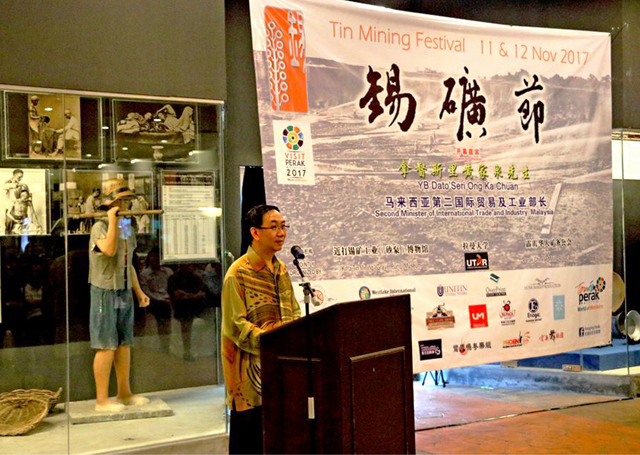
Prof Chuah relating the importance of tin mining industry to the existence of the Chinese community in Malaysia
Pointing out UTAR’s responsibility in researching history, Prof Chuah said, “The fact that UTAR Kampar Campus is located in Kampar within the Kinta Valley highlights our social responsibility to study the history of Kampar, especially the history of the tin mining industry. The country’s tin mining history is closely related to the history of the Malaysian Chinese. With the industry playing a pivotal role in Malaysia’s modernisation, the immense contribution by the forerunners shall forever be remembered as well.”
He emphasised, “Through historical research, we can gain a better understanding of the contribution made by our forefathers. However, this part of the history is not commonly known by many because it had not been systematically collated and researched previously. I’m glad that our academics and students are greatly involved in the process to restore this piece of history to how it should have been through various historical research works on the tin mining industry. The forefathers’ spirit of hard work and selfless dedication should be known by our future generations and passed on to the generations to come. Most importantly, we must be able to talk about the real history through the written record.
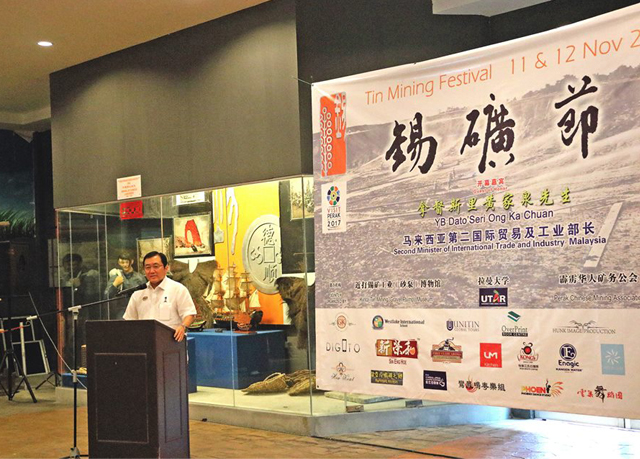
Dato Seri’ Ong delivering his opening remark
In his opening remark, Dato’ Seri Ong said, “Although the tin mining industry had collapsed, we can still make good use of the technology as well as be innovative in rediscovering new use of tin to revitalise the industry. Tin products will create higher value than raw tin. Therefore, by the support of technology, we should focus and develop on tin processing.” He added, “In addition to cherishing memories and reminiscing history, we should also understand the importance of looking forward so that we have the acumen to open up a brand new chapter for the tin mining industry.” He also announced the donation of RM20,000 to the Tin Mining Festival in recognition of the organisers’ efforts to preserve the history of tin mining as well as to celebrate the legacy of the pioneering miners.
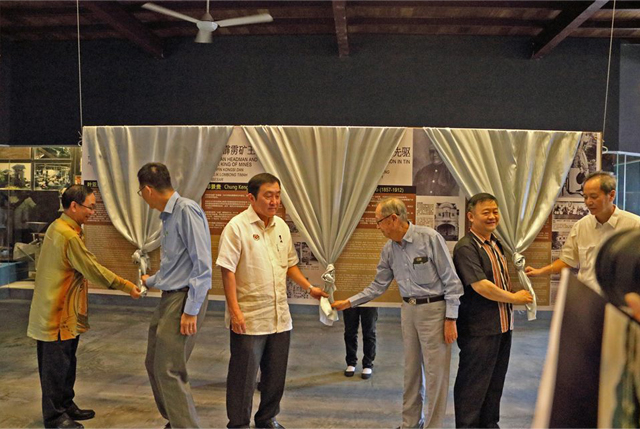
The VIPs unveiling the portrait gallery of Malaysian Miners
The highlight of Tin Mining Festival 2017 included the launch of the portrait gallery of Malaysian Miners, namely the Father of Kuala Lumpur Yap Ah Loy, Clan Headman and Perak’s King of Mines Chung Keng Quee, Pioneer of Modernisation in Tin Mining Industry Leong Pi Joo, as well as millionaire and philanthropist Loke Yew; followed by the “Humanity and Nature”-themed photography exhibition by Perak-born photographer Hunk Tung.

Dr Wong explaining to the VIPs the contributions of each prominent Malaysian miner featured in the gallery
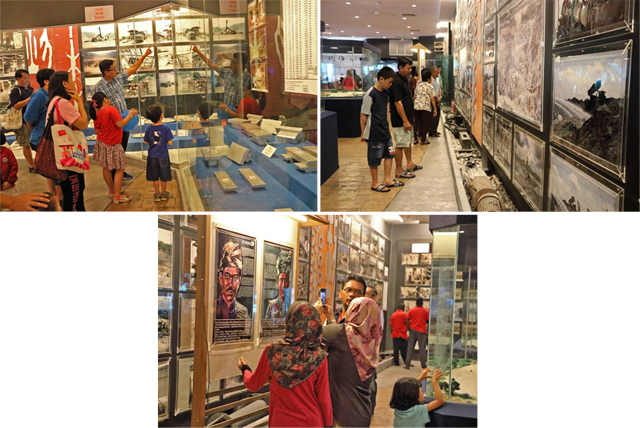
Visitors learning the history of Kinta Valley’s tin mining industry as they tour the museum
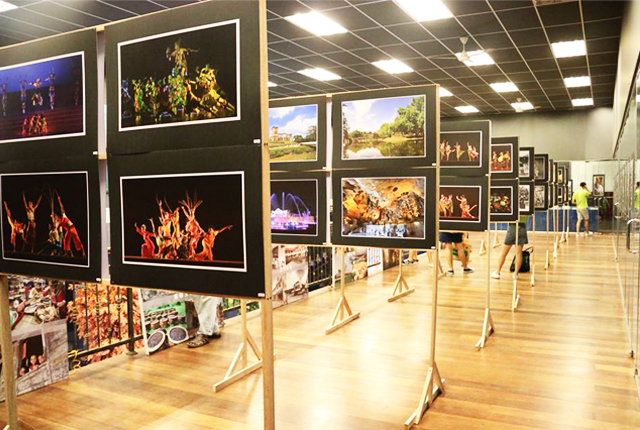
The “Humanity and Nature”-themed photography exhibition
The third edition of the annual festival saw some new additions such as the cultural performances, namely Hakka folk song-singing, Cantonese opera, wushu, and cultural dances; story-telling on tin mining; games; making of traditional lanterns; Liu Bao tea sampling; and food stalls selling traditional delicacies – each having its unique relations with tin mining back then.
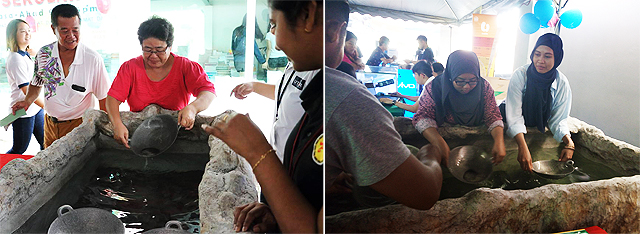
Visitors experiencing the dulang washing process which was mostly carried out by women
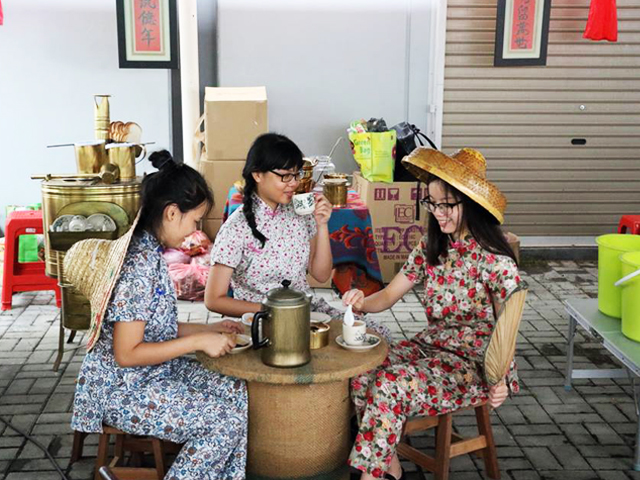
Liu Bao tea sampling
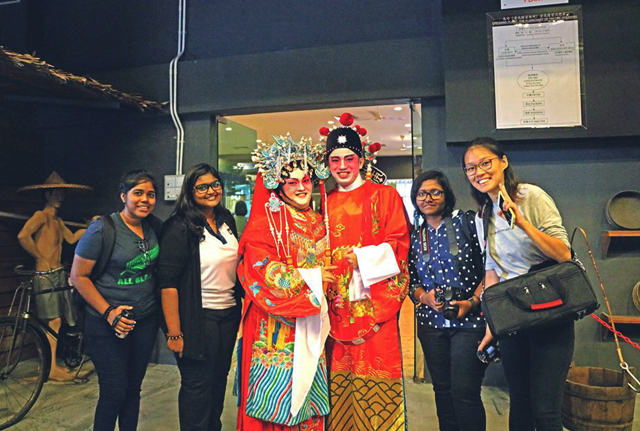
Visitors taking photo with the performers of the Cantonese opera
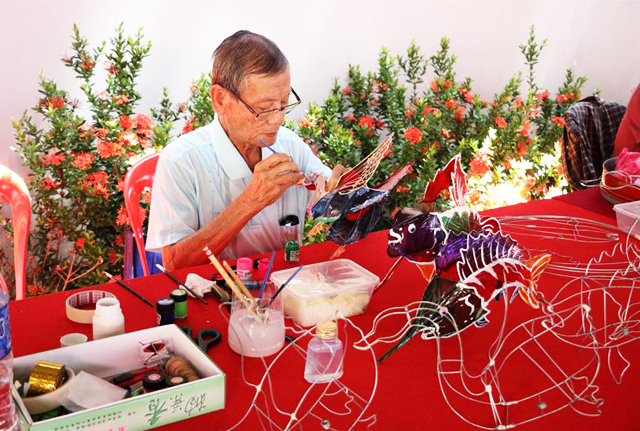
A vendor showing visitors the making of traditional lanterns
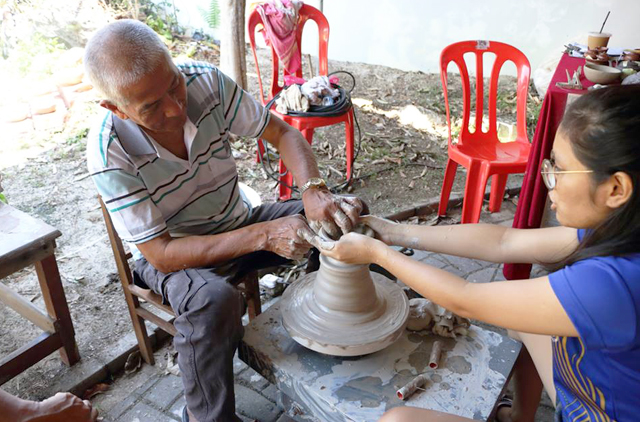
A visitor trying her hand on pottery making
Tin mining was a thriving industry which made significant contributions to the country’s economic growth back in the 19th century. The proliferation of tin mining industry in Kinta Valley opened up employment opportunities which attracted the Chinese immigrants to settle down permanently in Kinta Valley as tin miners. Such influx of Chinese immigrants subsequently led to townships such as Taiping, Ipoh, Gopeng, Kampar and others mushrooming across Kinta Valley.
Tin Mining Festival 2017 is sponsored and supported by Chang Jiang International Sdn Bhd, Ipoh Kong’s Coffee, OverPrint Book Centre, Yee Kong Coffee, How Kit Madu Kelulut, ENARGIC Kangen Water, UM Global Sdn Bhd, Digato Communication Sdn Bhd, Myprawn Village, Sin Eng Hoe, Art in Sun, local Facebook page and group such as Amazing and Ipoh 大只广吹水交流区.
© 2019 UNIVERSITI TUNKU ABDUL RAHMAN DU012(A).
Wholly owned by UTAR Education Foundation Co. No. 578227-M LEGAL STATEMENT TERM OF USAGE PRIVACY NOTICE